Contrary to what Game of Thrones would have us believe, exceptionally-skilled swordsmen have been few and far between in history. Unlike weapons like the bow and arrow and the spear, the sword takes an exceptional amount of skill to get good at. Even then, its use on the battlefield is limited, as it’s more suited for one-on-one duels than coordinated, unit-based combat.
That, however, doesn’t make it entirely useless. In fact, before the advent of gunpowder, the sword was an exceptionally-deadly melee weapon in the hands of those that could learn how to wield it. There’s a reason some of the most renowned warriors in history have also been some of the best swordsmen.
Of course, it’s impossible to know who all of them were; the sword is, after all, one of the oldest weapons we know of. It is, however, possible to pick out the best of them from the records we do have, which is precisely what we intend to do. These are our picks for the ten most skilled swordsmen to have ever existed.
10. Donald McBane
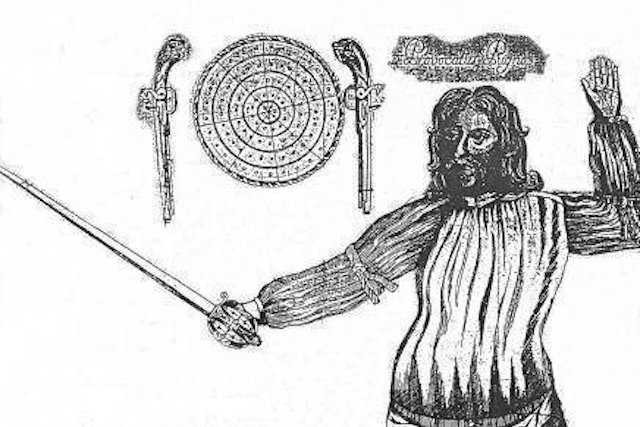
To say that Donald McBane – perhaps one of Europe’s best fencing masters ever – lived an eventful life would be an understatement. Born in Inverness in 1664, he ran away from home at the age of 23 and enlisted in the British army. His first tryst with organized combat came in the form of the Battle of Mulroy in 1688, where he fought on the side of the Mackintoshes against the Macdonalds – two of the most powerful Scottish highlands clans of the time. While they lost the battle, for McBane, it was just the beginning.
He’d go on to fight many battles for the British army not just in Scotland, but across Europe, including the Nine Years’ War against France. He picked up the sword after a duel with his governor to settle a payment dispute. After years of practice, he got so good at it that soon, he was challenging and beating some of the best-known fencing masters for duels across Europe.
Donald McBane would end up opening many fencing schools, brothels, gambling dens and plenty of other establishments across the continent in the years to come. His 1728 autobiography – The Expert Sword-Man’s Companion – remains one of the best treatises on fencing ever written.
9. Rodrigo Diaz De Vivar
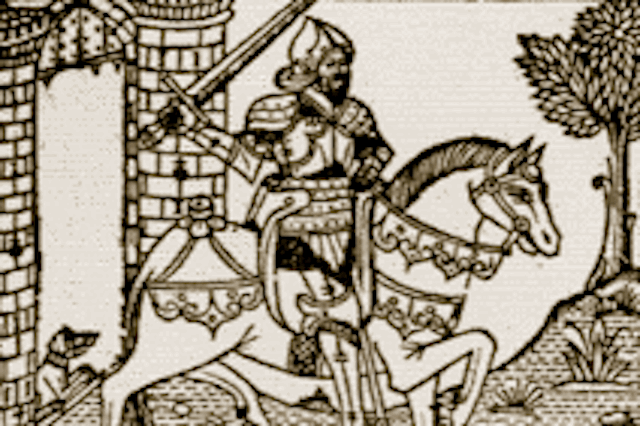
While there’s debate around where exactly Rodrigo Diaz De Vivar was born, according to legend, it was probably Vivar del Cid – a Castilian city in what is now Spain. However, we do have reliable records of El Cid’s existence, as he’s also one of the most celebrated heroes in Spanish history.
Rodrigo was raised in the court of King Ferdinand I of Castile in the eleventh century, and quickly raked up a reputation for his extraordinary skill with the broadsword and lance by fighting as the king’s champion from a very young age. His real skill, however, lay in military strategy, as he remains one of the few generals in European history that never lost a battle.
While he served many sides as a mercenary warlord following the death of the King in 1065 – making it impossible to give his allegiances a religious, or even a nationalistic, color – Rodrigo is still remembered as a national hero across Spain for his role in driving out the Moors from the city of Valencia. That didn’t last, however, as the city was recaptured barely three years after his death in 1099.
8. Tsukahara Bokuden
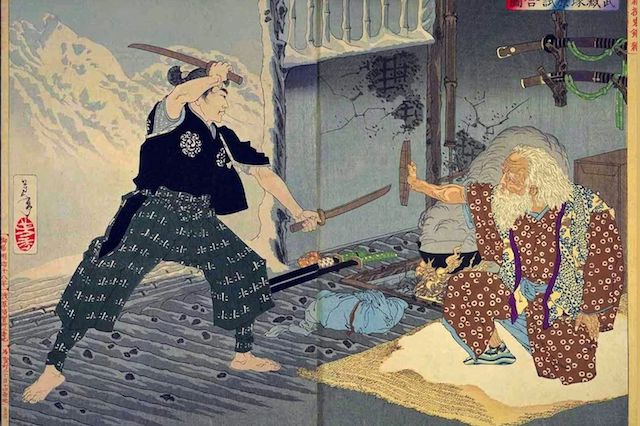
Tsukahara Bokuden was a renowned samurai warrior during the Sengoku era – a tumultuous period in Japanese history during the Ashikaga Shogunate, when the country was divided and effectively controlled by a handful of powerful warlords called daimyos. One of many great samurai fighters to emerge from this era, Tsukahara Bokuden learned on his own from a very young age, even developing his own style of fighting called the Kashima Shinto-Ryu – or the ‘single cut’ style.
During his military career under his daimyo, Bokuden won duels against many legendary fighters of the day, quickly gaining a reputation as one of the greatest sword fighters across Japan. He opened a school after his retirement for other promising swordsmen, which in turn inspired many other schools of Japanese swordsmanship in the years after his death at the age of 83.
7. “Mad Jack” Churchill
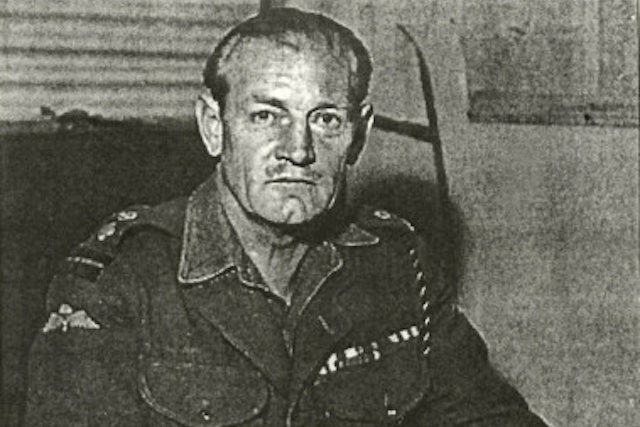
John Malcolm Thorpe Fleming Churchill was an officer in the British military during the Second World War. Also known as “Mad Jack” Churchill, he was known for his unique style of fighting. He’d usually enter the battle playing a bagpipe, followed by leading his unit into a charge with either his broadsword or longbow. It may sound ridiculous for that time, though he was also a skilled commander, often succeeding at his raids against Nazi outposts throughout the war.
While he was called ‘Mad Jack’ because of his daring fighting style, Churchill was undoubtedly a successful officer, earning many accolades for his actions throughout the war. He may not stand a chance against any other swordsman on this list in terms of pure skill, but for the time he lived in, Churchill certainly was one of the best swordsmen alive.
6. Tomoe Gozen

Tomoe Gozen belonged to a class of female samurai warriors in pre-modern Japan called the onna musha. You’d find references to her in movies, books, video games, poems etc. across Japan, as she’s still remembered as one of the best fighters in Japanese history. Her chosen weapon was the katana, though she’s said to have been a capable archer, too.
We don’t know much about her early life due to lack of records, though we know that at some point in the 12th century, she was taken in by a general from the Minamoto clan – Minamoto no Yoshinaka – as a concubine. She quickly proved her skill as a fighter and rose through the military ranks, soon commanding samurai units of her own.
While we know that Tomoe fought with Yoshinaka during his rebellion against the ruling Taira clan in the 12th century, records aren’t clear on how her story ends. We know that Yoshinaka was eventually defeated in battle by members of his own family. While some versions of the story say that Tomoe died with him on the battlefield during the Battle of Awazu in 1184, others claim that Yoshinaka had asked her to retreat before he made his final stand, and she lived out the rest of her life as a nun.
5. Fiore dei Liberi
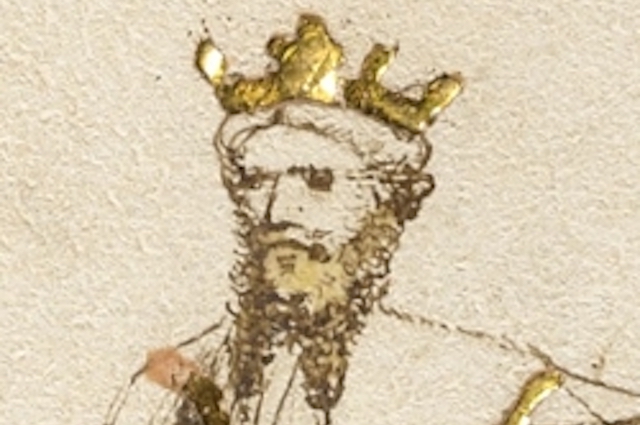
Like many other swordsmen on this list, we don’t know much about where or when Fiore dei Liberi was born, though we can deduce that it was some time in the middle of the fourteenth century from his works. We also know that he was one of the best sword masters in Europe during the medieval era, and his illustrative essays and books are still some of the oldest surviving guides on medieval and Renaissance-era swordsmanship.
Records are also unclear on when exactly Liberi picked up the sword, though we know that he grew up in a royal household and trained from childhood. He was exceptional at it, and had already established a reputation as a formidable martial arts master by 1383.
He’d go on to travel across Europe in the years to come, teaching noblemen from royal houses, meeting other masters, and picking up various different techniques on the way. His books – especially the Fior di Battaglia, or the Flower of Battle – are known for their detailed, illustrative descriptions. Some of his techniques were so influential that they’re still used for training in fencing schools around the world.
4. Ito Ittosai Kagehisa
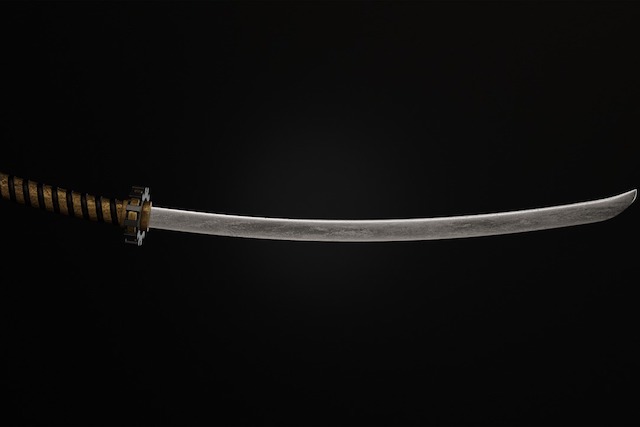
Ito Ittosai Kagehisa was born around the end of the Sengoku period in 16th century Japan. While we don’t know the precise details of his early life, we do know that the skills and techniques he developed throughout his life make him one of the greatest swordsmen in history. The fighting style he pioneered – Itto-ryu, also known as the ‘One Sword’ style – remains one of the most influential schools of Japanese swordsmanship, as it gave birth to a bunch of other styles popular today.
Like many other skilled swordsmen of the era, Kagehisa spent a lot of his time traveling from one place to another and duelling other skilled swordsmen throughout his life. He picked up various fighting styles on the way, and eventually developed his own unique school of fighting. Itto-ryu eventually got so popular that it was chosen as one of the two official schools of fighting during the Tokugawa shogunate.
3. Johannes Liechtenauer
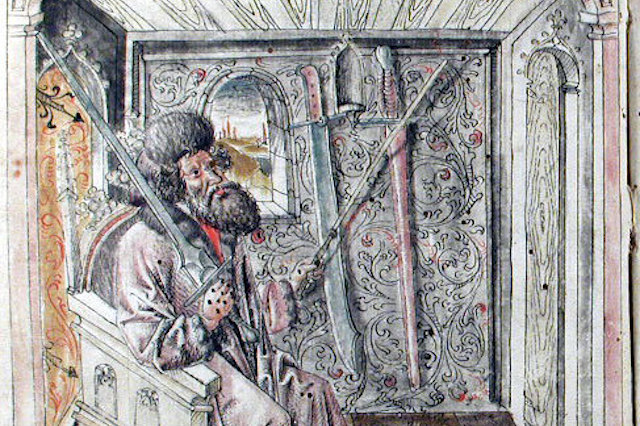
Johannes Liechtenauer is considered to be the father of early European martial arts, though interestingly enough, we’re not entirely sure if he existed. No records of his life exist in the public domain, and all we know about him is through references from other people.
From those records, though, it’s clear that Liechtenauer didn’t just exist, he may have been the founder of the entire German school of fencing. A style of fencing that emerged in the German regions of the Holy Roman Empire some time in the 14th century, the earliest known manuscript related to the school was written by him, even if the actual document has been lost to time.
Liechtenauer was adept at the two-handed sword, but his teachings included instructions on other weapons, too – like knives, staffs etc. He travelled extensively, and his technique was developed after meeting and duelling masters from around the world.
2. Hattori Hanzo
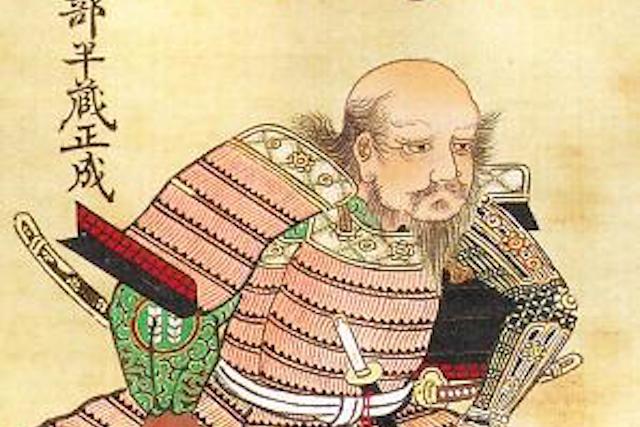
The name ‘Hattori Hanzo’ sounds familiar to most people, and not just because of the famous character of the same name in Kill Bill. Hanzo has been immortalized in many fictional stories in Japan and beyond as a legendary swordsman, and for good reason. He remains one of the best ninja swordsmen in Japanese history, as well as one of the best military leaders.
Starting his training at the age of eight, Hanzo was already fighting for the Matsudaira clan (later the Tokugawa clan) by the time he was 18. He’s said to have been ruthless against his opponents on the battlefield, earning him the nickname ‘Demon Hanzo’ among rival factions. Apart from his extraordinary skill with the sword, he was also a brilliant strategist. Hanzo was instrumental in the rise of the shogun Tokugawa Ieyasu, militarily as well as diplomatically.
1. Miyamoto Musashi
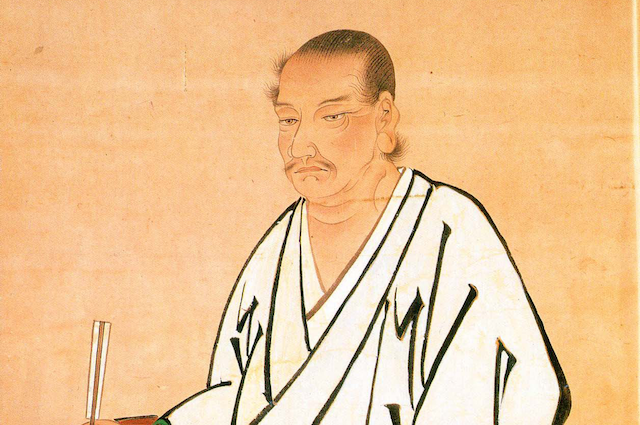
Even if Japanese history is full of skilled swordsmen, Miyamoto Musashi is considered by many to be the best of them. Born in 1584, he earned a reputation as a skilled swordsman at the age of 13, when he defeated and killed a professional fighter in single combat. He was a ronin – a masterless samurai – and developed his technique in the years to come by duelling and defeating masters from all across Japan. He developed his own style of fighting with two swords, the nito ichi-ryu, though his favorite weapon was the nodachi – a long two-handed Japanese sword. He is said to have been so good that at the age of thirty, he swore to only duel with wooden swords.
By most accounts, Musashi remained undefeated throughout his life, despite many reputed fighters from across Japan often challenging him in duels. The most famous one of them was Sasaki Kojiro – a reputed and skilled swordsman in his own right – though he was defeated by Musashi with his wooden sword within minutes.